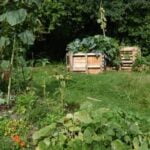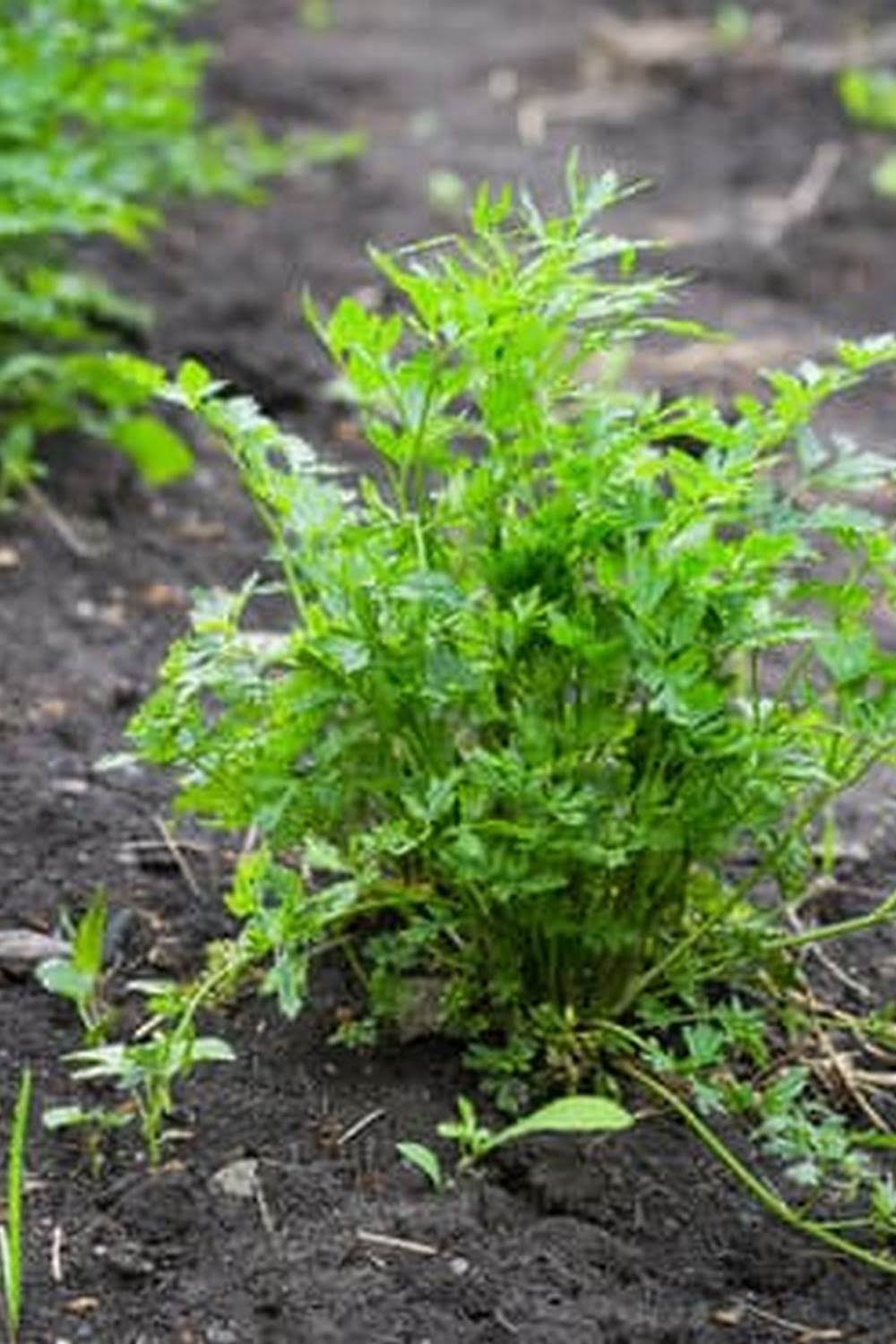The use of fire ash as a soil amendment in vegetable gardens has been a practice for centuries, with many gardeners swearing by its effectiveness. In this article, we will explore the benefits, composition, application, and potential concerns of using fire ash in vegetable gardens.
Additionally, we will discuss the recommended vegetables for fire ash application, its effects on soil pH and environmental impact. Lastly, we will address common myths and misconceptions about fire ash to provide evidence-based information on its use.
Throughout history, gardeners have relied on fire ash to improve the health of their vegetable plants and increase yields. The mineral-rich composition of fire ash provides essential nutrients that can benefit the growth and development of a wide variety of vegetables. However, there are also potential drawbacks and concerns associated with using fire ash as a soil amendment.
In this comprehensive guide, we will delve into the details of how to apply fire ash safely in vegetable gardens while addressing any potential risks or precautions. By the end of this article, readers will have a better understanding of whether or not using fire ash is suitable for their own sustainable gardening practices.
The Composition of Fire Ash
When it comes to the use of fire ash in vegetable gardens, understanding its composition is essential. Fire ash is primarily composed of minerals and nutrients that can benefit the growth of vegetable plants. Common components found in fire ash include calcium, potassium, magnesium, and phosphorus. These elements essentially act as a slow-release fertilizer when added to the soil, providing essential nutrients for plant growth over time.
Calcium is one of the most abundant minerals found in fire ash and plays a crucial role in cell wall structure and nutrient uptake for vegetables. Potassium helps regulate water movement within plants and contributes to overall plant health. Magnesium is important for chlorophyll production, aiding in the process of photosynthesis. Phosphorus is vital for root development and flower/fruit production, making it an essential nutrient for vegetable plants.
While the minerals present in fire ash can benefit vegetable plants, there are potential concerns or drawbacks to consider. One concern is the alkaline nature of fire ash, which can raise the pH levels of the soil. This shift in pH can impact nutrient availability for plants, potentially leading to deficiencies or toxicities.
Another consideration is the potential presence of heavy metals or contaminants in fire ash, especially if it comes from sources such as treated wood or certain materials. Therefore, it’s crucial to know where your fire ash is coming from and ensure its purity before using it in vegetable gardens.
Is Essential
when considering its use as a soil amendment in vegetable gardens. By being informed about the mineral content and potential concerns associated with fire ash application, gardeners can make knowledgeable decisions about incorporating this material into their gardening practices.
How to Apply Fire Ash in Vegetable Gardens
Safe Handling and Application
When it comes to applying fire ash in vegetable gardens, safety should be a top priority. It is important to wear gloves and a mask when handling ash, as inhaling it can be harmful to the respiratory system.
To incorporate fire ash into the soil, it should be spread evenly over the garden bed and then gently mixed into the top few inches of soil. It is crucial to avoid applying large amounts of ash at once, as this can lead to an imbalance of nutrients and potentially harm the plants.
Correct Amount for Different Vegetables
The amount of fire ash to use in a vegetable garden largely depends on the type of vegetables being grown. Leafy greens such as lettuce and spinach require less ash compared to root vegetables like carrots or potatoes.
A general rule of thumb is to apply no more than 20 pounds of fire ash per 1,000 square feet of garden area. It is also advisable to conduct a soil test before adding fire ash to determine if any specific nutrients are lacking.
Risks and Precautions
While fire ash can provide beneficial nutrients for vegetable plants, there are potential risks associated with its use. Excessive application of ash can raise the pH levels of the soil, making it less suitable for certain crops. Additionally, using contaminated or chemically treated wood for burning can introduce toxins into the ash, posing health hazards for both plants and humans. Therefore, it is essential to source clean and untreated wood for generating fire ash for gardening purposes.
Recommended Vegetables for Fire Ash Application
- Tomatoes: Tomatoes thrive in slightly acidic soil, and the calcium and potassium found in fire ash can help promote healthy fruit production. When applying fire ash to tomato plants, it is important to use a limited amount, as excessive amounts of ash can lead to an imbalance of nutrients in the soil.
- Peppers: Peppers also benefit from the use of fire ash due to its high potassium content. Potassium is essential for flower and fruit development in pepper plants. It is recommended to apply a small amount of fire ash when planting pepper seeds or transplants, and to monitor the plants for any signs of nutrient deficiencies.
- Squash: The high phosphorus content in fire ash makes it beneficial for squash plants, as phosphorus is essential for root development and overall plant growth. However, it is important to use fire ash sparingly with squash, as excessive phosphorus can inhibit the uptake of other nutrients by the plant.
| Vegetable | Recommended Use of Fire Ash |
|---|---|
| Tomatoes | Use a limited amount to promote healthy fruit production |
| Peppers | Apply a small amount when planting seeds or transplants |
| Squash | Beneficial for root development and overall plant growth but should be used sparingly |
Effects of Fire Ash on Soil pH
Fire ash contains a variety of minerals and nutrients that can have a significant impact on soil pH. When incorporated into the soil, fire ash can help to raise the pH levels, making it less acidic. This is particularly beneficial for vegetable gardens, as most vegetables prefer slightly acidic to neutral soil conditions. Here are some key points to consider when using fire ash in your vegetable garden:
- Ash Composition: Fire ash contains alkaline materials such as calcium, magnesium, and potassium which can help to neutralize acidic soil and raise pH levels.
- Benefits for Vegetable Plants: Many vegetables thrive in soil with a pH level ranging from 6.0 to 7.0. By using fire ash as a soil amendment, you can help create optimal growing conditions for your vegetables.
- Correct Application: It is important to apply fire ash carefully and sparingly, as excessive use can lead to overly alkaline soil conditions which may be harmful to certain plants.
When incorporating fire ash into your vegetable garden, it is essential to test the pH level of your soil beforehand and monitor it regularly afterwards. This will ensure that you maintain the ideal pH range for your particular vegetables and avoid any potential imbalances that could hinder plant growth.
Environmental Impact of Using Fire Ash
Using fire ash in vegetable gardens is a practice that dates back centuries, with many gardeners embracing it as a natural and cost-effective way to enrich the soil. However, when considering the environmental impact of using fire ash, it is important to weigh the potential benefits against its ecological implications.
One of the primary benefits of using fire ash in vegetable gardens is its ability to return vital nutrients to the soil. Wood ash contains potassium, calcium, magnesium, and other trace minerals that can benefit plant growth. When used in moderation, fire ash can help improve soil fertility and enhance the overall health of vegetable plants. Additionally, incorporating fire ash into the soil can help neutralize acidity and raise pH levels, creating a more hospitable environment for certain crops.
Despite these benefits, there are potential concerns regarding the environmental impact of using fire ash. Care must be taken to responsibly source and use fire ash to prevent any negative repercussions on water and air quality. Excessive use of wood ash can lead to an imbalance in soil pH, affecting nearby plants and ecosystems.
Furthermore, improperly disposed fire ash can contribute to air pollution if not handled carefully. Thus, it is important for gardeners to exercise caution and mindfulness when utilizing fire ash in their vegetable gardens.
| Environmental Impact | Implications |
|---|---|
| Soil Fertility | Improves with added nutrients from fire ash |
| Air Quality | Potential pollution from improper disposal of excess fire ash |
| Water Quality | Risks associated with excessive use leading to imbalanced pH levels |
Common Myths and Misconceptions About Fire Ash
There are several common myths and misconceptions about the use of fire ash in vegetable gardens. It is important to address these misconceptions and provide evidence-based information to support the use of fire ash as a beneficial soil amendment.
One common myth is that fire ash contains harmful chemicals that can be detrimental to plant growth. However, this is not entirely true.
While it is possible for fire ash to contain harmful substances such as heavy metals or toxins, the risk of these being present in significant quantities in wood ash from home fires is very low. In fact, when used in moderation and from clean sources, fire ash can actually benefit vegetable gardens by providing essential nutrients to the soil.
Another misconception is that using fire ash will drastically alter the pH levels of the soil, making it unsuitable for vegetable plants. While it is true that wood ash can increase the pH of soil due to its alkaline nature, this effect can be beneficial for certain types of vegetables that thrive in slightly alkaline soil conditions such as broccoli, cabbage, and Brussels sprouts.
However, it is important to monitor and test the pH levels when using fire ash to ensure that it does not become too alkaline for other plants.
Some people also believe that using fire ash in vegetable gardens will result in an increased risk of contamination or pollution. However, when sourced responsibly and used in reasonable amounts, fire ash can actually be a sustainable practice that minimizes waste and supports healthy plant growth. By incorporating best practices for handling and applying fire ash, gardeners can mitigate any potential environmental impact and contribute to more sustainable gardening practices overall.
- Myth: Fire Ash contains harmful chemicals
- Myth: It will drastically alter soil pH
- Myth: Increased risk of contamination or pollution from using Fire Ash
Conclusion
In conclusion, the practice of using fire ash in vegetable gardens is not only a traditional approach but also a beneficial one. The composition of fire ash contains valuable minerals and nutrients that can enhance the growth and development of various types of vegetables. When applied correctly, fire ash can help improve soil pH levels, support plant health, and contribute to sustainable gardening practices.
While there may be potential concerns or drawbacks associated with using fire ash in gardens, such as its impact on water and air quality, responsible sourcing and application can help mitigate these risks. It is important for gardeners to carefully handle and incorporate fire ash into the soil, following recommended guidelines for different types of vegetables.
Additionally, regularly testing and monitoring soil pH levels can help ensure that fire ash is used in a manner that benefits both the plants and the environment.
Ultimately, the decision to use fire ash in vegetable gardens is a personal one that depends on individual gardening goals and preferences. With a better understanding of the benefits, considerations, and potential environmental impact of using fire ash as a soil amendment, gardeners are encouraged to explore this traditional practice and experiment with incorporating it into their own gardening routines. By doing so responsibly, gardeners can experience firsthand how fire ash can contribute to successful and sustainable vegetable cultivation.
Frequently Asked Questions
Which Vegetables Do Not Like Wood Ash?
Some vegetables do not like wood ash, such as potatoes, radishes, and sweet potatoes. Wood ash contains high levels of calcium, which can potentially affect the acidity of the soil and harm these plants.
Is Fire Ash Good for Tomatoes?
While fire ash can be beneficial for tomatoes in small quantities, it’s important to use it sparingly. Tomatoes prefer slightly acidic soil, and excessive use of wood ash can increase the pH levels, leading to nutrient deficiencies.
Can I Put Fire Pit Ashes in My Garden?
Fire pit ashes can be put in the garden, but it’s essential to do so cautiously. Wood ash contains potassium and calcium, which can benefit certain types of plants. However, too much ash can raise the soil pH level excessively and harm plants. It’s best to use a small amount and spread it evenly over the garden bed.

If you’re looking to get into vegetable gardening, or are just looking for some tips on how to make your current garden better, then you’ve come to the right place! My name is Ethel and I have been gardening for years. In this blog, I’m going to share with you some of my best tips on how to create a successful vegetable garden.





